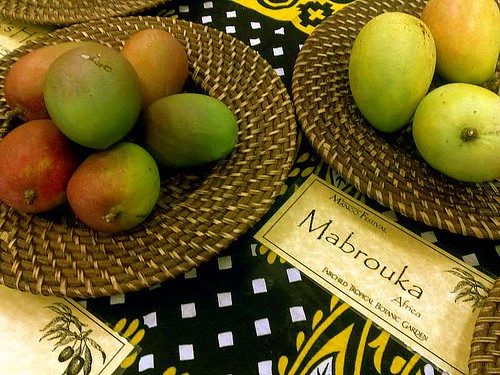 There was something for everyone at this celebration of all things mango. This fruit was part of the auction.
There was something for everyone at this celebration of all things mango. This fruit was part of the auction.I volunteered both Saturday and Sunday during this past weekend's festival. Instead of making smoothies, I ended up helping sell locally grown mangos at the International Fruit Market. The mangos were mainly Tommy Atkins variety from the Williams Grove facility in the Redlands. Other mangos available were the kind I had peeled on Friday -- Champagne mangos from Mexico, Banana mangos from Haiti and Keitt mangos from Puerto Rico.
Here are some highlights from my time at the festival, followed by a slideshow.
COSTUME PARTY
Before the official beginning of the festival, Bohopoetgirl girl and I volunteered at the Mango Safari Costume Party on Friday night. As there was a surplus of volunteers and we had peeled mangos all morning, we were "ordered" to relax and enjoy ourselves -- and that we did! The party was held in the beautiful ballroom on the second floor of the visitor's center, which spills out into a spacious veranda overlooking the garden and one of the lakes.
Bohopoetgirl and I decided this was a good deal: all you can eat buffet with great food (catered by chef Victoria Nodarse and FIU hospitality school students), all you drink bar sponsored by Bacardi, African drum music, DJ and a crowd-pleasing belly dancer made for a fun evening. Tickets for the whole affair were $45 a piece for non-members -- a bargain compared to parking, dinner, drinks and entertainment on South Beach.
We had the opportunity to meet some mango growers at this event. Two were from Peru and the other was from Ghana; the latter gives out interest-free microloans to the poor to spur growth in the economy and create a sustainable mango industry.
CONDO MANGOS
Fairchild was selling small, potted mango trees for $40. I wish I had a yard to plant a tree, but after attending a lecture by Rob Campbell, I learned that growing a fruit-producing tree in a pot is quite doable. Container mango trees need to be in pots at least 25 to 30 inches deep; the tree should grow to about five to six feet tall. A mango tree usually takes four to five years to fruit. Recommended varieties for "condo mangos" include Cogshall, Manalita, Rosigold and Nel Petite.
Here are some tips:
- Use a pot with multiple drain holes
- Avoid overwatering
- Use a soil with good structure -- not too peaty
- Mix soil with silica sand or pine bark
- Put pot on casters and spin the pot around occasionally
- Use about 3 inches of gravel on the bottom of the pot
- Don't bury plant too deeply when repotting
- Use mulch on the top, avoiding the trunk area (malaleuca is good)
- Never use green or cypress mulch
- Select a sunny place
- Never water leaves
- Cover the plant with a sheet (cloth, not plastic) if frost threatens
- Use a slow release fertilizer
MANGO SALAD
Here's a delicious, quick and easy recipe for a Thai Spicy Mango Salad by chef Wilson Villanova, the owner of a boutique catering business called Art of Food (not to be confused with the vegan restaurant in Midtown).
4 cups shredded green mango
4 tbsp diced hot red chili
4 tbsp thinly sliced red onion
4 tbsp rice vinegar
4 tbsp fish sauce
4 tbsp sugar
2 limes
8 tbsp chopped roasted peanuts
8 tbsp dried shrimp
1 small red cabbage
2 sprigs fresh mint (optional)
Step 1 - Dressing: place hot chili, sugar, vinegar and fish sauce in a small bowl. Squeeze the lime into the bowl and mix until the sugar has been dissolved. Set aside.
Step 2 - Place shredded mango in a medium-sized bowl. Add red onions, roasted peanuts and dried shrimp. Pour dressing over the salad and gently toss until ingredients are fully mixed. Serve on individual plates, on a red cabbage leaf and garnish with a sprig of mint. Serves four.
Chef Wilson is a graduate of Johnson & Wales Culinary Arts Program and has over 20 years of culinary and hospitality experience starting in Rio de Janeiro, in his native Brazil, and more recently in Miami. He can be reached at be reached at (305) 345-7339.
MANGO ART
Inside the gallery, paintings that featured mangos were on display. Some of them -- exquisitely detailed watercolors -- were done by students of Fairchild's own adult watercolor class, taught by Donna Torres. One of these days, I'm going to get back into botanical illustration. I took the class once but only produced a small number of paintings and drawings.
YUMMY TO GO
Unbelievably, I only brought one mango -- a Keitt variety from Puerto Rico. (I still have a giant bag of champagne mango seeds to suck the flesh off of at home. My macaw, Samba Jalapeño, goes into absolute rapture when I give her one!)
I did however take home a jar of homemade mango cinnamon jam, which was prepared by volunteers. The jam is usually available, one of volunteers told me, at special events or at the Williams Grove facility on market day.
Chef Allen, famous for his namesake restaurant in Aventura and his use of tropical fruit in gourmet cooking, was there selling his signature sauces and chutney. I liked the mango samples, including a mild mango ketchup, but ironically, it was the Orange-Chipotle "Blasting" Sauce that blew me away.
Schnebly Winery was also selling tropical fruit wines. I tried the Lychee sparkling wine instead of the mango because I wanted something bubbly and really cold to drink in the hot afternoon. The Lychee wine, so redolent of the fruit, but not quite as tart, hit the spot.
MANGO AUCTION
The most interesting part of the festival for me was the auction. Although I didn't bid, I thoroughly enjoyed listening to the energetic and enthusiastic Dr. Campbell share mango trivia before sending the mangos off to bidding. In some cases, Dr. Campbell regaled the audience with tales about where he had collected seeds or how a particular mango came to our shores, as with the case of the Haden, which started mango history in the western hemisphere.
I didn't do an official count, but there must've been at least two hundred varieties of mango from all over the world spread out over the long tables. One bidder paid $575 for half a dozen champagne mangos -- the same kind we had been selling at $1 a piece at the fruit market! Most of the mangos auctioned between $40-$100, each plate offering about 4-10 pieces of fruit. Many of the mangos were grown locally but their seeds had originally come from abroad.
AFRICA
The Mangos from Africa theme extended into music and food; I especially enjoyed listening to the African drummers and the music from a kora, a tall guitar-like instrument. A special treat among the vendors was Kafa, a restaurant that is open for breakfast and lunch in Midtown. I had never tried Ethiopian food and I liked it so much I ordered Alicha Wot -- beef with seasoned butter, garlic, onions, fresh ginger -- on both days. The $8 plate came with a generous serving of delicious red lentils, pickled cabbage with vegetables, teff (pancake-like, spongy bread grown from a grain native to Ethiopa), a slice of another kind of fragrant bread (similar to cornbread) and a dollop of spicy mango sauce. Ironically, Kafa doesn't serve Ethopian food at its restaurant just yet, opting for more traditional American fare. They do plan to offer an Ethopian menu by the end of the summer. Give them a call (305) 438-0114 if you're curious and craving!
Created with Admarket's flickrSLiDR.

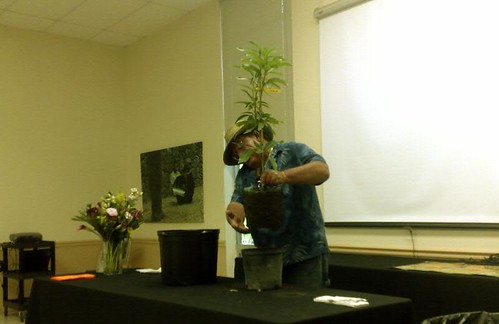
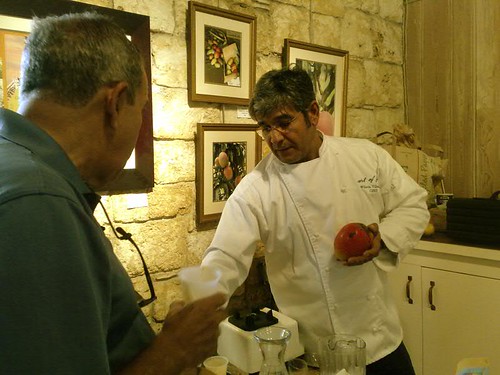

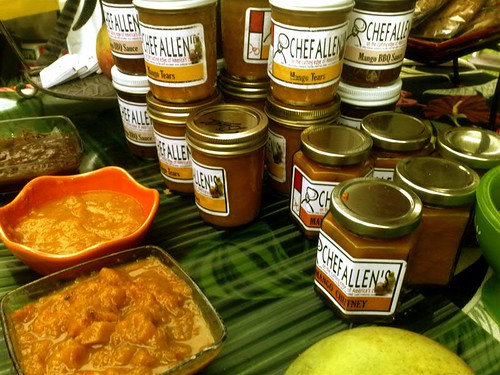
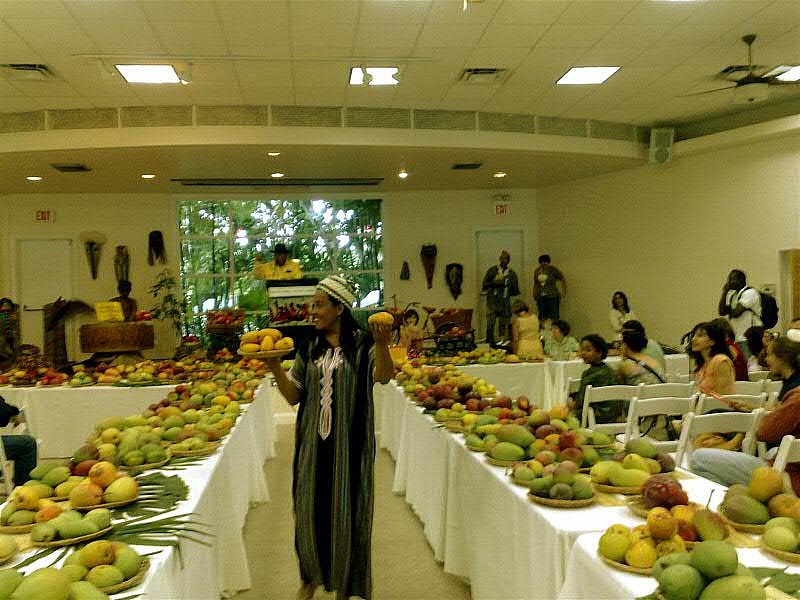
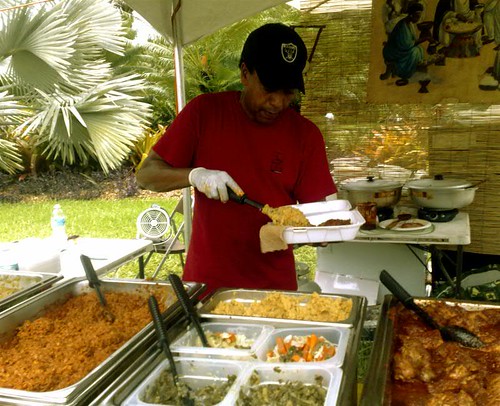




3 comments:
It would be better if an alternative to cypress mulch was used. The trees are far to important and majestic to be ground up for the sole purpose of being turned into garden mulch.
Hi Jeffrey, thanks for stopping by and noting that; it was an editorial error on my part. I meant to say something other than cypress, i.e. maleleuca. Mr. Campbell did talk about the unfortunate mining of cypress for mulch. I've corrected this in the post. Thanks again.
Hi! I was checking out the condo mango section. I'm sort of a mango enthusiast. I didn't know mangoes could be grown indoors. Or does it mean that you have to leave the plant outside for a couple of hours each day?
Post a Comment